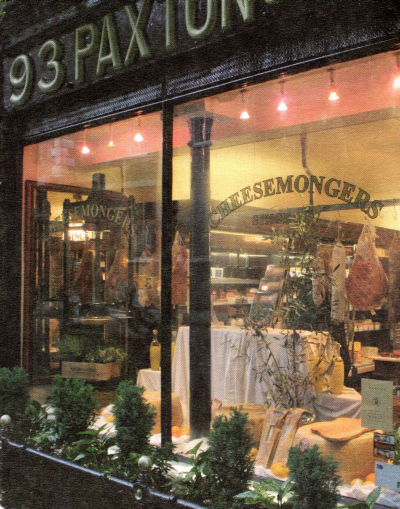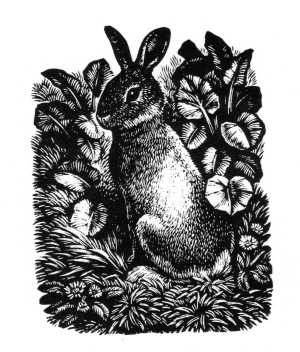Rabbits, rarebits, toasted cheese & an artifact.
It turns out that Welsh rarebit is not particularly Welsh and probably is not rarebit either. Recipes for “rabbits” made from cheese predate any use of the term ‘rarebit’ and appear without a national adjective at least as early as the beginning of the eighteenth century. We therefore can discount speculation by the historians of resentment who consider the term ‘rabbit’ a slur on the Welsh because, they say, the bigoted would maintain that only a foolish Welshman would consider cheese to be, or alternatively to be as good as, a dish of rabbit.
English and Scottish rabbits appear as early as the Welsh ones, and during the late twentieth century both Philippa Davenport and Elizabeth David recommended some unlikely, but decidedly British, ‘French’ rabbits. Sometimes cooked cheese dishes appear in the guise of “toasted cheese” and other things, but on examination most of these are recipes for rabbits too.
Others have wavered but Jane Grigson’s English Food, a most credible source, is unequivocal in dismissing the usage ‘rarebit’ or ‘rare bit:’
“Rabbits, not rarebits or rare bits, which are both false eytemological refinements. In 1725, Mr. J. Byron recorded in his Private Journal [sic] ‘I did not eat of the cold beef, but of Welsh rabbit…I had a scollop [sic] shell and Welsh rabbit.’ Mid-eighteenth century cookery books give Welsh rabbit.” (Grigson 30)
Richard Boston echoes Mrs. Grigson two years later. In Beer and Skittles, he asks his reader to “[f]ollow common sense and common pronunciation by calling this dish” rabbit and not rarebit and adds that ‘rarebit’ is “a piece of false etymologizing first recorded sixty years” after the first usage of ‘rabbit.’ It would appear from this that he was familiar with English Food.
 Boston considers the usage facetious but not malicious: “Obviously a cheese dish which is called Welsh rabbit is a joke, like Bombay duck (a fish) or a Birmingham screwdriver (a hammer).” (Skittles 120-21) Mrs. Grigson adds Glasgow capon (salt herring; also called ‘Glasgow magistrate’), red herring itself and Scotch woodcock (a savory of anchovy and egg) to the list and notes that in the case of our rabbit “it seems to have been a joke that the Welsh themselves were happy to share.” (Grigson 31)
Boston considers the usage facetious but not malicious: “Obviously a cheese dish which is called Welsh rabbit is a joke, like Bombay duck (a fish) or a Birmingham screwdriver (a hammer).” (Skittles 120-21) Mrs. Grigson adds Glasgow capon (salt herring; also called ‘Glasgow magistrate’), red herring itself and Scotch woodcock (a savory of anchovy and egg) to the list and notes that in the case of our rabbit “it seems to have been a joke that the Welsh themselves were happy to share.” (Grigson 31)
Hannah Glasse, for one, includes four ‘rabbits’ in her iconic Art of Cookery Made Plain and Easy (London 1747); two English, one Scottish and one Welsh (no Irish). Sheila Hutchins concurs with Mrs. Grigson about the proper usage and Elizabeth David uses ‘rabbit’ too, although without explanation.
Mrs. Grigson, however, does explain the subsequent appearance of the term ‘rarebit:’
“Then in 1785 along comes Mr. Francis Grose, with his Classical History of the Vulgar Tongue, to smooth away the joke: ‘A Welch [sic] rabbit, bread and cheese toasted, i.e. a Welch [sic] rare bit.’” (Grigson 30)
In 1826, Christine Isobel Johnstone instigated one of her lively ‘discussions:’
“This academic, histrionic, and poetical preparation has produced a good deal of discussion in its day. The Welsh Rabbit, (by the way, we are inclined to think with a learned friend, that the true reading is Welsh Rare Bit,) has ever been a favorite morsel with those gentlemen who think a second supper fairly worth the other three regularly-administered meals of the day.” (‘Dods’ 323n.)
Note that Mrs. Johnstone playfully provides the ‘true meaning’ of the term rabbit for the thickly literal but does not question its usage historically.
Lizzie Boyd picked up the thread along with Boston in 1976 to explain that
“[t]he controversy as to the correct name has gone on since the 18th century, the Welsh themselves insisting on rabbit or Caws Pobi but rarebit in the sense of rare meaning soft appears more probable.” (Boyd 363)
Boyd unfortunately provides no citation (an all too common flaw of otherwise scrupulous cookbooks) while dissonantly taking pains to assure her reader that “[w]herever possible, information and conclusions have been based on contemporary sources in the form of manuscript recipes, recipe books and literary works.” (Boyd 9) In the event we choose to cast our lot with Mrs. Grigson and the Welsh, not least for the sheer eccentricity of the less prosaic option.
 An English rabbit, or is he Welsh?
An English rabbit, or is he Welsh?
Mrs. Johnstone had been typically whimsical in describing rabbit as an ‘academic, histrionic and poetical preparation:’ in fact it is one of the simplest if most satisfying small dishes found anywhere. Even so, rabbit is one of those preparations that, like gumbo, has as many variations as cooks. Mrs. Johnstone herself published six of them in 1829. (‘Dods’ 322-23, 323n.) Elisabeth Ayrton includes three recipes in Good Simple Cookery and seven more in The Cookery of England; Boyd has five (including the only Irish rabbit anywhere; a good recipe); Mrs. Grigson covers at least as many in English Food and Sheila Hutchins comes in at seven as well. There admittedly is some overlap among these sources, but countless variations have been published by other authors. Most of the recipes are good, because although we have decided preferences, it is difficult to dislike something that enhances the flavor and comfort of melted cheese.
Cheese is the only ingredient common to every rabbit, but all kinds of cheeses have found their way into them. Understandably enough, the older the manuscript the more likely it is to call for the local cheese, and historically there were lots of them, including soft cheeses no longer extant in the British Isles. The exception, sadly, is Ireland, where cheesemaking dwindled during the eighteenth century and had died out altogether by 1829. (Lucas 28) Only late in the twentieth did a cheese industry begin to reappear there.
Some, but by no means all, rabbits either start with a roux, or else stir egg yolks, or whole beaten egg or both, into the cheese. Various beers (ales, porters and stouts), or milk or cream, appear in rabbit, and so do seasonings of cayenne, dry as well as prepared mustard, and Worcestershire. Other additions may include white, red or fortified wine (Mareira is particularly good), anchovies, their paste or essence. Chutneys and even kirsch (not recommended) make cameos and the Editor likes mushroom ketchup.
Rabbits reached a height of popularity from the middle of the 1700s through the first half of the nineteenth century, when they became positively fashionable among the wealthy. It is deeply satisfying that something so simple and homely became a benchmark of gentility and speaks volumes about the honest culture of the age. Revival of both the rabbit and the culture would be welcome in this era of sous vide and political hypocracy.

A cheese toaster
Cheese toasters specially designed for the sole purpose of presenting rabbits were much in vogue during the Regency. Fancy ones made of sterling resembled elaborate jewelry boxes; elegant, specialized chafing dishes in disguise. Typically a shallow tray, sometimes partitioned to hold portions for spooning over each diner’s toast, nested within a metal sleeve over either a shallow basin for hot water or mounts for candles or lamps to keep the rabbit warm. A hinged or fitted lid completed the toaster, which sometimes included a second tray for the toast itself. Cheese toasters are collectible and expensive, if you can manage to find one of these beguiling artifacts of a lost world.
We have prepared many different kinds of rabbit and are inclined to use whatever decent hard cheese, British or otherwise, is to hand. Combinations of cheeses, even assorted scraps, are not unacceptable, and as noted some recipes do specify a combination of particular varieties. A base of light roux foils separation or oiling but if we have no butter we skip the roux or stir a little cornstarch into the cheese. We never shrink from omitting egg but like both mustard and cayenne, and always want to add a splash of beer.
In extremis, however, there is nothing wrong with basic American grilled cheese. Slap a portion of ‘American cheese food product,’ or a thin sheet of Cheddar if you must, between slices of white bread buttered on the outside, then fry the sandwich in an iron skillet until both sides turn gold. Do not, ever, consider using presliced American cheese for anything else.
During their heyday rabbits appeared alone at table as a light lunch, snack, savory or fourth, nocturnal, meal, but we like to serve them as a robust lunch or light supper with crisp bacon and grilled tomatoes.
The series of annotated recipes that appears in the practical provides only a selection of possibilities. Interesting alternatives proliferate and our various instruction are, like the pirate code, more guidelines than rules. The first recipe in the series is the Editor’s standby and we like the Irish rabbit (number VII) for its appealing tension between sharp, smooth, sweet and sour.
Sources.
Elisabeth Ayrton, The Cookery of England (London 1974)
Good Simple Cookery (London 1958)
Richard Boston, Beer and Skittles (London 1976)
Lizzie Boyd (ed.), British Cookery (Woodstock, NY 1976)
‘Meg Dods’ (Christine Isobel Johnstone), The Cook and Housewife’s Manual (Edinburgh 1829)
Hannah Glasse, The Art of Cookery Made Plain and Easy (London 1747)
Jane Grigson, English Food (London 1974)
Sheila Hutchins, English Recipes and Others (London 1964)
A.T. Lucas, “Irish Food Before The Potato,” Gwerin vol. III No. 2 (1960) 8-43

